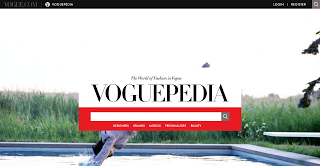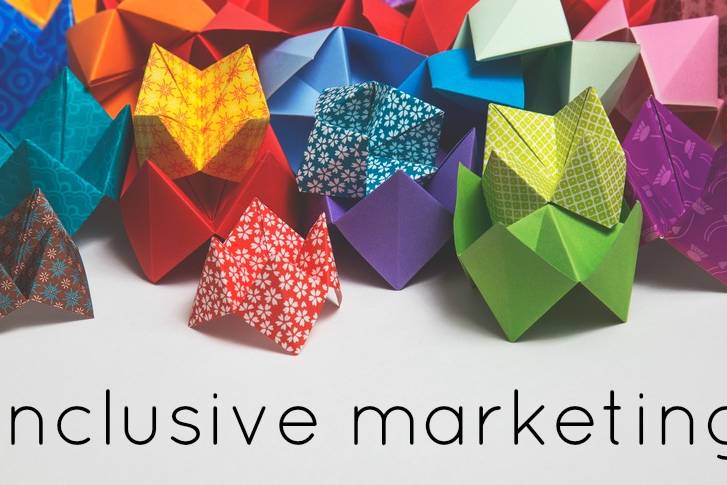Who doesn’t love fashion? Whether it be an appreciation for the art form or simply admiring a well-dressed look, good style is, well, always in style! One of the most beautiful things about fashion is it’s a participatory sport. From scrutinizing the covers of a magazine to wearing one’s favorite T-shirt, each and every person has their own fashion story to tell, which means social media and the fashion industry can be a match made in heaven.
By using social media tools, the fashion industry can uncover a goldmine of consumer inspiration and trend-testing. The ability to identify and capitalize on what’s hot and catch rising trends in advance of market saturation can make all the difference to a fashion brand or retailer’s margin. The ability to amplify the buzz of a new look at social’s warp-speed provides even the most leading edge designers with a strategic weapon. So why, with all this creative energy and market-moving opportunity available to an industry built around trends, do so few fashion organizations take social business beyond the most routine implementation?
Just a few weeks ago, New York’s Fall Fashion Week was in full swing. Every morning I would log on at my desk, anticipating Something New. Now, part of my interest was fueled by our work as we advise and speak to the fashion industry on social media strategy, and part of it was just good fun. There was lots of tweeting and a number of well-executed fashion show video streams, but there was not as much digital innovation as I had anticipated — given the magic of the subject matter. So I took a deeper look to find some examples of “social fashion” and see how this uber-creative industry is applying technology to support its art. Two sites caught my attention; Zara and Voguepedia.
Zara People!
 Zara is a Spanish clothing and accessories company that offers a budget-level ready-to-wear retail line. They focus on being “fashion imitators” and are well-known for their ability to spot trends and create products at light — or is it social? — speed, often going from sketch-pad to in-store within 30 days. They are rumored to employ teams of street-style trend spotters armed with smart phones to roam well-heeled neighborhoods in search of the next-big-thing. Such on-the-spot reporting can take a trend from observation to the design shop in hours. Choosing not to spend on advertising of any kind, they pour their profits into new store openings — learn more from this case study (PDF). Clearly a company tailor-made for social media!
Zara is a Spanish clothing and accessories company that offers a budget-level ready-to-wear retail line. They focus on being “fashion imitators” and are well-known for their ability to spot trends and create products at light — or is it social? — speed, often going from sketch-pad to in-store within 30 days. They are rumored to employ teams of street-style trend spotters armed with smart phones to roam well-heeled neighborhoods in search of the next-big-thing. Such on-the-spot reporting can take a trend from observation to the design shop in hours. Choosing not to spend on advertising of any kind, they pour their profits into new store openings — learn more from this case study (PDF). Clearly a company tailor-made for social media!
Recently, Zara enhanced their street watcher strategy by creating Zara People! This web site allows people to upload photos of themselves wearing their products. Zara selects the best and features the actual real-people photos on their website as part of their merchandising strategy. Go to their web store, see your beautiful next-door neighbor sporting that new outfit and have it delivered to your door faster than you can say cupcakes. This could even make the phrase “power to the people” a fashion statement! Zara is using crowd-sourcing together with the art of curation to encourage self-expression, while still maintaining the control needed to define and maintain their brand.
VOGUEPEDIA
 Voguepedia is an online resource catering to the fashion academic searching for facts and figures about designers, brands, models and fashion personalities. Chock full of references to the history of fashion, a user can, for example, use the site to trace back ever-changing fashion trends or the evolution of a particular design house.
Voguepedia is an online resource catering to the fashion academic searching for facts and figures about designers, brands, models and fashion personalities. Chock full of references to the history of fashion, a user can, for example, use the site to trace back ever-changing fashion trends or the evolution of a particular design house.
Besides serving fashion students worldwide, this is the perfect resource for armchair fashionistas who are looking to win the “who is wearing what designer?” game played at many a suburban cocktail party during the Academy Awards.
This site has managed to find a modern, consumer-oriented application for WIKI tools — which are usually relegated to boring intranets and sprawling encyclopedias. As a bubbling spring of fashion trivia, I was thrilled when I saw the “updates” feature on the navigation bar — believing I could finally put my facts to good use by adding them to Voguepedia the way topic enthusiasts do on Wikipedia. Alas, the feature only allowed me to receive email updates about the content of the site. So all the wonderful fashion bloggers and writers out there are still waiting for a centralized place to share and aggregate their facts and ideas.
While wiki-lovers will celebrate its cool new adaptation, the Voguepedia missed a fantastic opportunity by failing to open the site to user-generated content. There would need to be a governing board or review team — as with all authoritative texts — but the amount of interesting data they could have collected, but chose not to, would have been enormous. It’s a pity.
Imagine how powerful Voguepedia would be if Condé Nast Digital and Vogue took a page from the distributed authorship model found in most wikis and let audience members add input to the fashion entries. There could even be a collection of well-respected fashion bloggers from around the globe posting on the site. User-generated information would serve as fuel and fire for future issues of Vogue and guarantee an eternal flame of hot content ideas.
Choosing to control what information is associated with the fashion topics, Voguepedia maintains a “look but don’t touch” attitude that is counter to the WIKI tradition. Of course, it also sends the not-so-subtle signal that Vogue is the divine authority on fashion truth — users are there to read, appreciate and tag their favorites, not to question that authority.
While it offers eye and mind candy for the fashion-lover, it totally misses the social mark. What might have become the world’s largest database of fashion ideas, history and trends fueled by passionate people turn out to be just another magazine – online.
I was intrigued by the dialectic of Zara People! and Voguepedia. One for the people, by the people, the other a tightly controlled online reference, glossy and frozen. As we move into an age where content curation leads content, where influencers dictate styles and trends, some organizations really stand out, while others fall flat on the runway.
Warning: Attempt to read property "base" on array in /home3/trusten9/public_html/leadernetworks/wp-content/plugins/wp-user-profile-avatar/shortcodes/wp-user-profile-avatar-shortcodes.php on line 665
Warning: Attempt to read property "base" on array in /home3/trusten9/public_html/leadernetworks/wp-content/plugins/wp-user-profile-avatar/shortcodes/wp-user-profile-avatar-shortcodes.php on line 665
Warning: Attempt to read property "base" on array in /home3/trusten9/public_html/leadernetworks/wp-content/plugins/wp-user-profile-avatar/shortcodes/wp-user-profile-avatar-shortcodes.php on line 665
Warning: Attempt to read property "base" on array in /home3/trusten9/public_html/leadernetworks/wp-content/plugins/wp-user-profile-avatar/shortcodes/wp-user-profile-avatar-shortcodes.php on line 665
Related Posts
December 15, 2015
Why Inclusive Marketing should be on Your Agenda for 2016
Your guide to doing inclusive marketing - the right way!
November 18, 2014
Building the Business Case for Community
In every corner of an organization, the idea of having an online community is…
September 24, 2014
Gender vs. Generational Divide Tops Findings From The Social Consumer Study
In our latest study, The Social Consumer, we explored the factors that inform,…
2 Comments
Add comment Cancel reply
This site uses Akismet to reduce spam. Learn how your comment data is processed.



Hello! I would like to know the date of this article. Thank you!
Hi – thanks Martine for your question. The date of this post is 10/2011. All dates are in the URL of the posts.